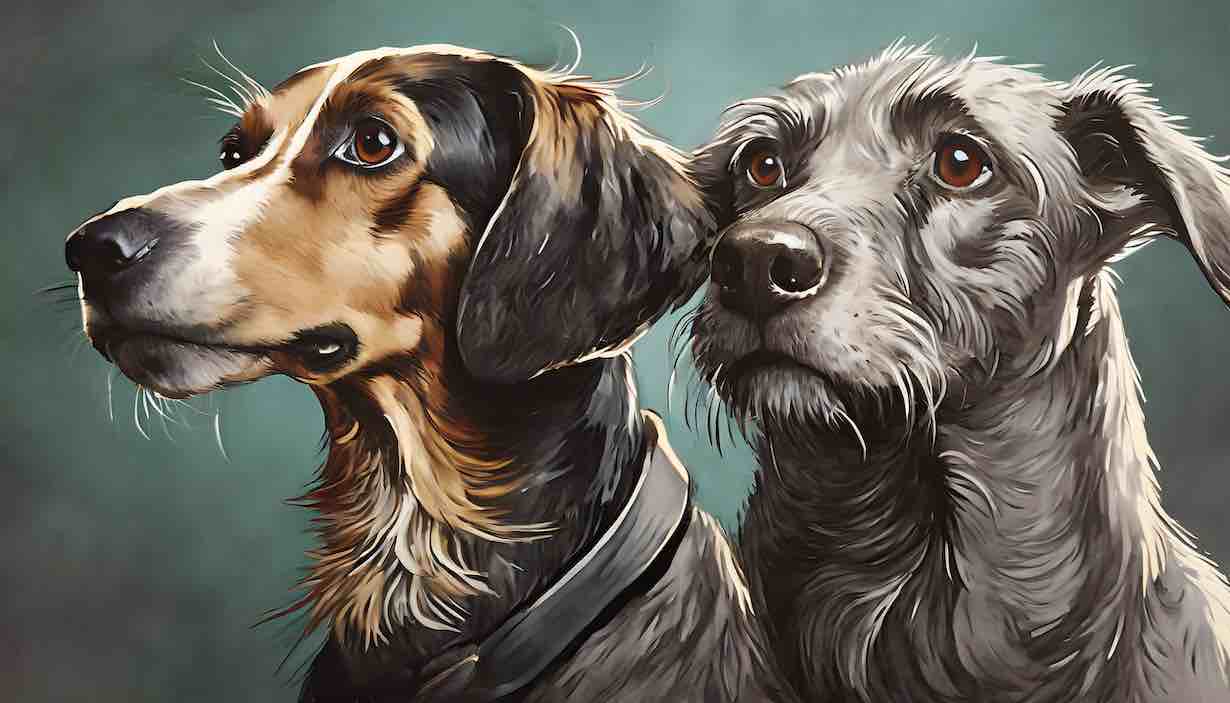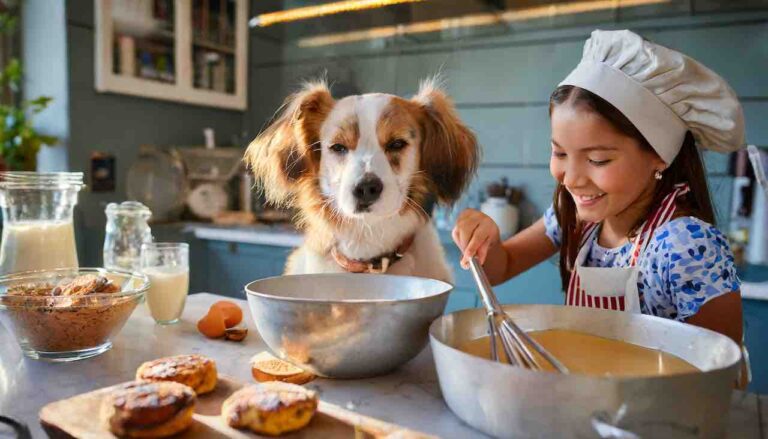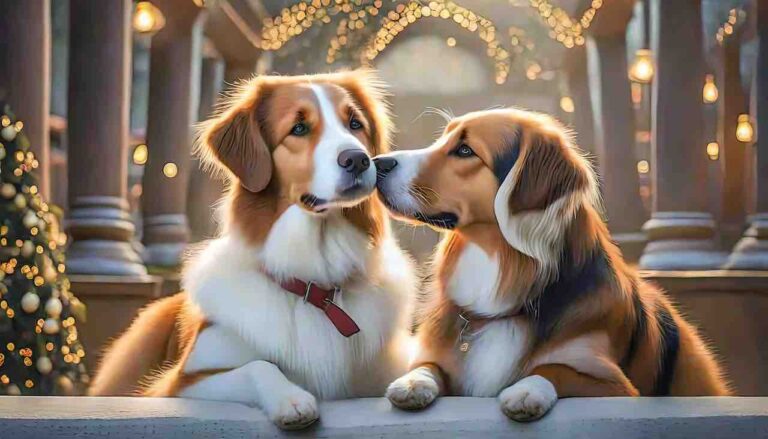Decoding the Canine Conversation of Wags, Wiggles, and Woofs!
Have you ever wondered what that wonderful canine mind was thinking?
Welcome, dear readers, to a captivating exploration of the enchanting world of doggy dialogue—a realm where tail wags, ear positioning, and facial expressions serve as the vocabulary in a silent symphony of communication. Join us as we delve deep into the intricacies of canine body language, unlocking the secrets behind every wiggle, twitch, and joyful bark.
1. Tail Talk: The Art of Wags and Whirls
Let’s kick off our canine communication journey with the ever-telling tail talk. A dog’s tail is a dynamic instrument, speaking volumes about their emotions and intentions. A high, fast wag usually signals excitement and happiness, while a slow, low wag may indicate uncertainty or submission. A tucked tail suggests fear or submission, while a raised tail conveys confidence or alertness. Pay attention to the direction, speed, and height of the tail—it’s the first chapter in the delightful book of doggy dialogue.
2. Eloquent Ears: Positioning for Purr-fection
Ears, those furry radar dishes atop your pup’s head, are the next chapter in our doggy communication novel. Forward-facing ears denote attentiveness, curiosity, or excitement. Pinned-back ears might signal fear or submission, while raised ears suggest alertness. If your dog’s ears are relaxed and slightly back, it’s a sign of contentment. So, take note of those ear positions—they’re the punctuation marks in the intricate language of your canine companion.
3. Marvelous Muzzles: The Canvas of Canine Expressions
The muzzle, or snout, is the canvas where a dog paints their emotions through facial expressions. A relaxed, open mouth accompanied by a lolling tongue signifies a content and happy pup. Conversely, a closed mouth may indicate tension or anxiety. Pay attention to subtle changes like lip licking, which can convey nervousness or discomfort. And, of course, a big, toothy grin is the ultimate sign of canine joy and friendliness.
4. Bright Eyes: Windows to the Soulful Canine Spirit
Gazing into your dog’s eyes is like peering into the windows of their soul. Soft, relaxed eyes convey comfort and trust, while wide, staring eyes may signal alertness or anxiety. Averting their gaze can be a sign of submission, while a direct, unwavering stare might signify assertiveness. Observe the sparkle in their eyes—the gleam of excitement or the twinkle of love—they’re the emotive lanterns lighting up the canine communication highway.
5. Playful Paws: Happy Hops and Gentle Gestures
Don’t overlook those playful paws, for they are the dancers in the grand ballroom of doggy dialogue. Happy hops and pawing at the air might be an invitation to play. Gentle gestures, like a paw placed on your leg, can signify affection and a desire for connection. Watch for subtle tapping or scratching—a doggy Morse code signaling excitement, eagerness, or even impatience.
6. Wholesome Whiskers: Sensing the Atmosphere
Whiskers, those delicate strands framing your dog’s face, play a subtle yet significant role in canine communication. When whiskers are forward, it indicates curiosity or interest. Pulled back against the face might suggest fear or uncertainty. Pay attention to these fine-tuned sensors—they’re the antennae that help your dog navigate and sense the atmosphere around them.
7. Vocal Vibes: Woofs, Whines, and Wonderful Whistles
While body language takes center stage in the canine communication ballet, let’s not forget the vocal vibes that add melody to the symphony. Woofs of excitement, low growls of warning, joyful barks of playfulness—the auditory elements of the conversation are just as vital. Whines, whimpers, and yips convey a spectrum of emotions, from anticipation to distress. And, oh, the wonderful whistles—a call to attention or an expression of eagerness.
8. Tailoring Understanding: Recognizing Individual Canine Dialects
It’s crucial to recognize that just like human language, canine communication has dialects unique to each individual. A wag that means pure joy in one dog might signify nervousness in another. Understanding your specific pup’s body language quirks and nuances deepens the connection and allows you to converse in a language that resonates with their unique personality.
9. The Subtleties of Submissions: The Art of Canine Courtesies
In the nuanced world of canine communication, submission is an art—a dance of politeness and respect. A lowered body, a turned head, and a gentle lick are all signs of a dog acknowledging your authority. It’s a canine courtesy, a way of saying, “I trust you and respect your position in our pack.” Recognizing and responding appropriately to these gestures fosters a harmonious relationship built on mutual understanding.
10. Observing the Ensemble: Harmonizing the Components of Communication
In the grand finale of our doggy dialogue symphony, it’s essential to observe the ensemble—the harmonious interplay of tail, ears, muzzle, eyes, paws, whiskers, and vocals. Each component contributes to a symphony of communication that is rich, nuanced, and endlessly fascinating. When you learn to read the ensemble, you gain insight into the emotional landscape of your furry friend, creating a dialogue that transcends words.
In conclusion, understanding the various ways dogs communicate through their body language is an art—a dance of observation, interpretation, and responsiveness. As you embark on this journey of deciphering the silent language of wags, wiggles, and woofs, remember that the beauty of canine communication lies in its subtlety and sincerity. So, dear readers, go forth and converse with your furry friends in the universal language of love, understanding, and the delightful dance of doggy dialogue! 🐾💬✨







